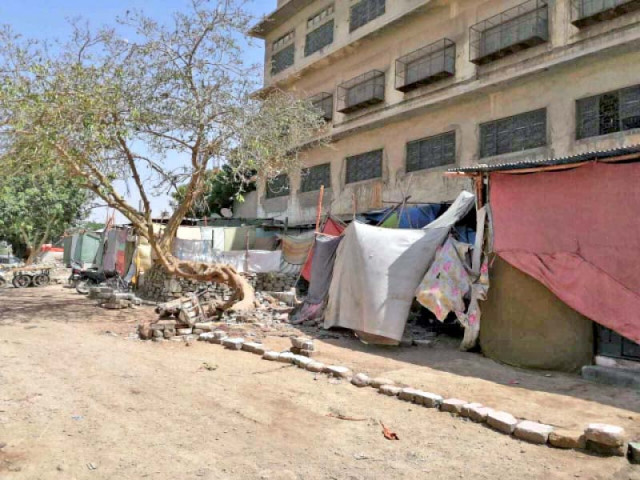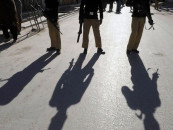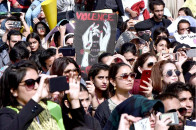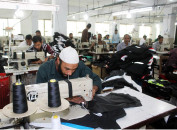Homelessness mars Eid for the displaced
A year on, KCR affectees still await alternative accommodation pledged by government

But then there were some for whom not much had changed from the past year. The weather was sweltering, same as a year ago. Trapped under the open sky, in the midst of the tragic remnants of what were once their homes, they did not have much to celebrate, same as the last year.
These were the displaced residents of Ghareebabad, Quaid-e-Azam Colony, Wahid Colony, Mujahid Colony, Moosa Colony and settlements in the vicinity of Gillani Railway Station and the Federal Urdu University of Arts, Sciences and Technology.
This was their second Eid marred by homelessness since they were left out in the cold in the aftermath of an anti-encroachment operation launched to clear the path for the construction of Karachi Circular Railway last year.
The drive was initiated last Ramazan in May, 2019, razing several structures, including at least 550 houses and 450 shacks, to the ground, affecting around 1,500 families.
The displaced residents were promised alternative accommodation by both the federal and the Sindh governments, but the pledges await fulfillment even a year on.
This is despite Supreme Court orders to provide alternative houses to the displaced families, who continue to live without roofs on their heads, surrounded by bleakness, hopeless and uncertainty, with no progress made by the government to accommodate them.
"We have no option but to continue to live without shelter under the open sky, in the cold and the scorching heat," said one among them, holding the federal and the provincial government responsible for their homelessness.
He further lamented that welfare organisations who had come to their aid last Eid, when their misery was fresh in the minds of people and the homelessness new to them, had seemingly overlooked them this time around.
Left on their own, they are now a forgotten issue.
Survival in times of pandemic
Their lives took a turn for the worse with the outbreak of the coronavirus pandemic.
Though some shifted to their relatives' houses or rented dwellings, a large segment was further beaten down by the unemployment resulting out of a lockdown intended to curb the spread of the pandemic.
Most of them worked as daily wage workers and lost their livelihoods as a consequence, so much so that worsening financial conditions forced some who had shifted to rented houses to move back to makeshift dwellings on the rubble of their homes.
While improvised arrangements for their accommodation have been made, they pose a health risk. Dingy, camp-like temporary houses are too small to accommodate large displaced families, offering little possibility of maintaining sufficient distance to keep the spread of the coronavirus at bay, and lack of sanitation facilities makes maintaining hygiene near impossible.
As a result, most men and boys continue to sleep in the open or in Suzuki pickup vans.
Published in The Express Tribune, May 29th, 2020.



















COMMENTS
Comments are moderated and generally will be posted if they are on-topic and not abusive.
For more information, please see our Comments FAQ